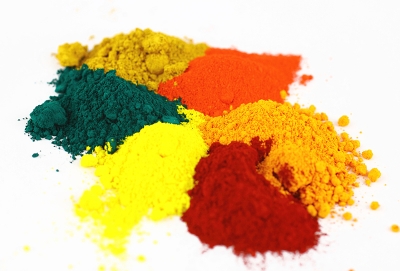The Chemical Art of Color
Many tools are used by artists to create a whimsical image visibly appealing to the eye. Some examples include ink, dye, and paint or pigments. All of these unique instruments have one main characteristic in common: chemistry!
Dyes, for example, are colored substances that add to or change the color of whatever they are added to. They are ionizing, organic compounds that use chromophores (atoms responsible for the color of a compound) as the major component. The process of textile dyeing (with materials such as leather, fabric, fiber, and yarn) encompasses many well-known chemicals such as acetic acid, sodium hydroxide, and sodium chloride.
Pigments, on the other hand, appear colorful because they reflect and absorb specific types of visible light, depending on the source of light. They are insoluble products that can be either natural or synthetic. Some organic pigments include indigo and Indian yellow, while there are biological pigments such as chlorophyll found in plants, as well as myoglobin, which is found in muscle cells.
Ink substances are unique in that they can consist of solvents, pigments, dyes, surfactants, and other materials. The solvents are what makes ink a liquid. The two most popular kind of inks are pad printing inks (found in pens) and screen printing inks (like the ink jet cartridges bought at office supply stores). The difference between the two is that pad printing inks are formulated for the purpose of rapid evaporation, while screen printing inks are designed to resist evaporation so that they don't dry inside the screen.
There are a wide variety of jobs that use chemical analysis of paint every day. Chemists who work with these materials in their labs and experiments have developed new formulations of these chemicals that are less expensive to make and have a better color quality. They also are developing products with greater stability and better interactions with the material that they so often come into contact with. Museum workers also use chemistry to analyze the pigments and dyes in historical paintings and artifacts to determine their age and place of origin. They can use this information to preserve and restore these artifacts. Finally, forensic chemists analyze evidence like this for criminal court cases, such as car paint or cosmetics remainders.


Sources:
https://www.slideshare.net/bejoybj/chemistry-of-inks-dyes-and-pigments
https://www.acs.org/content/acs/en/careers/college-to-career/chemistry-careers/dyes-pigments-ink.html
No comments:
Post a Comment